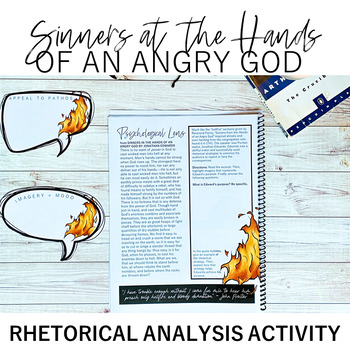The Crucible Complete Unit: Engaging Activities, Quizzes, Exam, & Essay
- Zip
What educators are saying
Also included in
- If you are new to teaching AP Lang or your AP Lang curriculum needs an upgrade, this AP Lang Growing Curriculum Bundle is for you! I know if you’re reading this, you’re an AP Lang teacher who is looking for a curriculum that is engaging, 2020 AP Lang CED aligned, research-based, thorough, and effectPrice $100.00Original Price $124.00Save $24.00
Description
Introduce new and exciting perspectives to The Crucible by Arthur Miller! This unit uses a scaffolded approach with literary lenses, so students can start with a foundation and build to higher-order thinking activities. This approach makes the unit perfect for students of all levels, including AP English Literature and Composition and AP English Language and Composition students.
- Students will start with The Crucible Literary Bookmarks, a study guide, and reader response quick write prompts to focus their reading and comprehension and personal connection to the story.
- Then, they will work to higher-order thinking skills with analysis activities that teach students about historical and social concepts.
- Finally, students will have several ways to show what they know: 1) editable reading check quizzes that can be used individually at the end of each act or as a unit test at the end, 2) an editable text-based multiple choice exam (great for AP prep), and 3) a project-based assessment for a book memorial with a grading rubric. You can use all three or pick and choose.
Digital and Print
The workbook comes in both digital and print formats, so you can choose what is best for your students, and the directions and text on the workbook are editable!*
*The headings, clipart, and fonts are fixed due to copyright; however, the directions and text on the pages are editable.
ENGAGING LENS ACTIVITIES
- Historical Lens: This activity is a text-dependent analysis and has an original passage that explains the history of McCarthyism and Miller in an accessible way.
- Cultural Lens: This activity includes four research-based tasks and a page for recording.
- Psychological Lens: This activity is an analysis of an excerpt from the sermon, “Sinners in the Hands of an Angry God” by Jonathan Edwards. They will use the quotation bubbles to complete a rhetorical analysis of the excerpt.
- Women’s Studies Lens: This activity is a series of four tasks that students will complete about Anne Hutchinson and Anne Bradstreet. Each task has historical background information and includes an analysis of Bradstreet’s poem, “To My Dear and Loving Husband.” The focus is on the role of women in Puritan society and highlights women who countered those constraints in very different ways.
- Social Lens: This activity is a “Hysteria Brew.” It is a jigsaw activity that becomes a collaborative poster of a cauldron. Students will analyze symbols and theme while workings with a small group.
- Sociological Lens: This activity is the project-based assessment at the end of the story and after the exams if you choose to give them. Students will create a memento to present and create a memorial. An editable rubric is included.
- Reader Response Lens: There are four reader response questions based on quotations from each act. These can be used as bellringers or discussion questions.
LITERARY BOOKMARKS
Students can use The Crucible Literary Bookmarks for focused reading.
QUIZZES
I included four comprehension-based reading check quizzes. The quizzes are editable and come in both a Word Document and a self-grading Google Form. There is one for each act with ten questions each. You can assign one after each reading, like I do, or since this is editable, if your students need a comprehension-based assessment, you can make it one big exam.
TEXT-DEPENDENT EXAM
An editable 40-point exam is included as both a Word Document and a self-grading Google Form. This exam is excellent for AP-prep, but is editable and therefore can be modified for any level. An answer key is included.
ESSAY PROMPT
An argumentative essay prompt is included. I included an editable exemplary example essay for you to use with your students that would score a 6/6 on the 2020 AP rubric.
SUGGESTED ANSWER KEY
The unit includes suggested answers or example answers for each question, prompt, or task in the unit when applicable.
UNIT GUIDE
An example unit guide is included to help you with scope and sequence while planning your unit. It is based on a 50-minute period. Please note that this is just a guide, and it should be adapted to best suit your class and your objectives. On the guide, you will find notes for setting up, organizing, planning, and teaching your unit.
Check out the preview for pictures!






